
Mark Levine spoke at a recent town hall on congestion pricing at John Jay College.
By A. Campbell
This week, New York State Assembly members decided to move forward with a congestion pricing plan in hopes of raising billions of dollars to modernize New York City’s flailing public transportation system. State leaders have not yet presented a detailed proposal of exactly how they expect to achieve those results. The proposed congestion pricing zone would encompass Manhattan’s central business district, beginning at 60th street and encompassing everything south to the Battery.
Congestion pricing has been the subject of heated debate among New Yorkers in recent months. Many see it as key to improving New York’s notoriously unreliable and aging subway system. In a recent interview on WNYC, Governor Andrew Cuomo called congestion pricing “the greatest opportunity we have had. We have talked about it for 20 years,” he said. “It is the smartest idea, I think, for urban development.”
Others view congestion pricing as a burden on city dwellers and a potential punishment for those living inside or along the borders of the designated congestion pricing zone. New York City residents opposed to the plan have asked why they should bear the burden of paying for upgrades to the mass transit system, when funds have been grossly misappropriated over the years thanks to political maneuvering and financial mismanagement.
The conversation – at times passionate and contentious – continued at a recent town hall meeting hosted by Upper West Side Council Members Helen Rosenthal and Mark Levine. The event took place in a large lecture hall at John Jay College where Rosenthal and Levine were joined by a panel of transit and environmental experts to moderate a public discussion as well as address questions and concerns from community members. The panel was comprised of Nick Sifuentes, Executive Director of the Tri-State Transportation Campaign; Julie Tighe, Executive Director of the NY League of Conservation Voters; and Ed Pincar, Manhattan Department of Transportation (DOT) Commissioner.
In her opening remarks, Rosenthal emphasized that her major concern was to ensure “that the MTA works for people with disabilities. Only a quarter of stations have elevators and about a quarter of those are out of service at any given time,” she said. Rosenthal addressed recent reports that show work done by the MTA costs four to six times as much as any other locality. “I’m really tired of it being a money pit,” she said. “It’s so critical that there is real accountability and transparency for any more money that we give over to the MTA.”
After lengthy opening remarks and presentations, the gathered crowd began to grow impatient waiting for their turn to weigh in and ask questions. Despite numerous interruptions, Sifuentes presented details of the MTA’s “Fast Forward” plan which New York City Transit Authority President Andy Byford has estimated will cost approximately $40 billion. In December 2018, Byford urged the City Council’s Transportation Committee to back his plan and “bite the bullet” – a phrase he has used repeatedly in his advocacy for the Fast Forward initiative. According to Sifuentes, 58.1% of Manhattanites ride the subway every single day.
Phil Beder spoke on behalf of Disabled in Action, a civil rights organization committed to ending discrimination against people with disabilities. Beder said that people with disabilities are “all for getting money for mass transit.” He pointed out that major overhauls to subway infrastructure need to happen not only for people with disabilities, but also for many others. “It’s for grandmas and grandpas, parents with strollers, commuters with luggage,” he said. “I would ask that accommodations be made for those of us who depend on our vehicles. [The current system] just doesn’t work for me. Please think of us when congestion pricing is being debated.” In response to Beder’s concerns, Pincar emphasized that exemptions or discounts for those with disabilities would be a priority of any plan.
Both Sifuentes and Tighe cited London and Stockholm as examples of major cities where congestion pricing plans have been successful at reducing traffic and emissions. In rebuttal, Upper West Side resident Robert Bata spoke about his own experiences living in London.
“As someone who lived [in London] for ten years and had to put up with the nightmare of congestion charging for areas outside the zone, I will say it reduced some traffic, but in the surrounding areas, it created unbelievable traffic jams,” Bata said. He spoke further about the detrimental effects of congestion pricing on local businesses saying, “It drove small businesses out because tradesman who needed to drive in [to London] and didn’t want to pay congestion charges were driven out by the cost of tolls.”
Bata also emphasized the rising costs of London’s congestion pricing plan and pointedly asked whether city and state leaders had been transparent about long-term costs to residents and commuters. Congestion pricing tolls in London, which originally cost eight pounds, he said, have since risen to more than eleven pounds. “Where is this going to stop,” he asked.
Attendees raised questions on what Sifuentes called the “broad strokes” currently under discussion. The “broad strokes” include a toll that drivers would pay when they crossed in and out of the designated congestion pricing zone. Sifuentes estimated that the toll would be approximately $5 – $6, and that drivers would pay once on their way into the zone and once on their way out. In response to questions from people who travel in and out of the city multiple times per day for work or to take care of family members, Sifuentes said that those crossing back and forth numerous times through the designated zone would not have to pay each time they entered or exited. Instead he said that a toll would be charged only once for entry and once for exit. It was unclear how authorities would regulate the traffic and implement the toll.
According to Sifuentes, the plan would also likely incorporate variable tolling, with higher toll costs charged for drivers entering the designated zone at peak times of day and slightly lower tolls for those crossing in and out of the zone during off-peak hours. A higher toll for tractor-trailer vehicles is also under consideration, he said. “If estimates from other cities are true, we expect this will reduce traffic by 13 percent or more,” Sifuentes noted.
Another major point of contention arose when Upper West Side residents voiced concerns that commuters driving in from New Jersey will leave their cars parked in the neighborhood and take the subway to their jobs. By doing so, the commuters would significantly decrease the amount of parking spots available for those who actually live in the neighborhood. Sifuentes mentioned that parking permits for residents were under discussion and that metered parking might also be an option. Pincar followed up by noting that residents would likely have to pay a charge to park, which drew a strong negative response from the audience. “The available curb space does not come close to accommodating all of the vehicles that residents of these districts own,” Pincar said.
The panel continued to address several questions and concerns over the course of the evening. Levine characterized congestion pricing as “arguably the most weighty policy debate that our city has confronted in many years,” and he acknowledged that New Yorkers are facing a “double crisis in transportation: below the streets in our subways and on the streets in gridlock.”
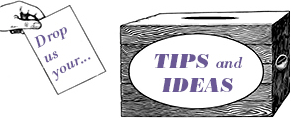



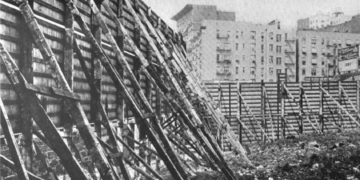

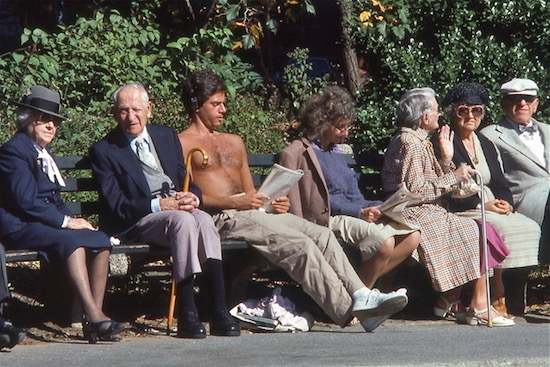
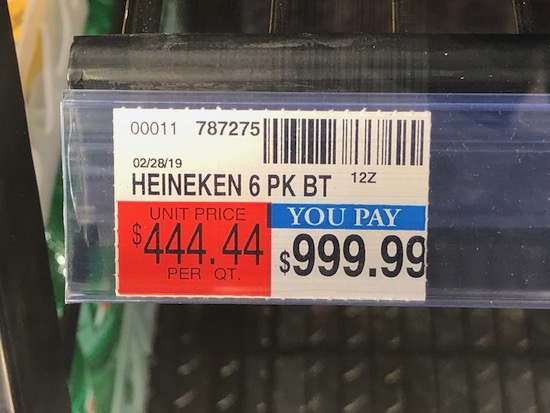
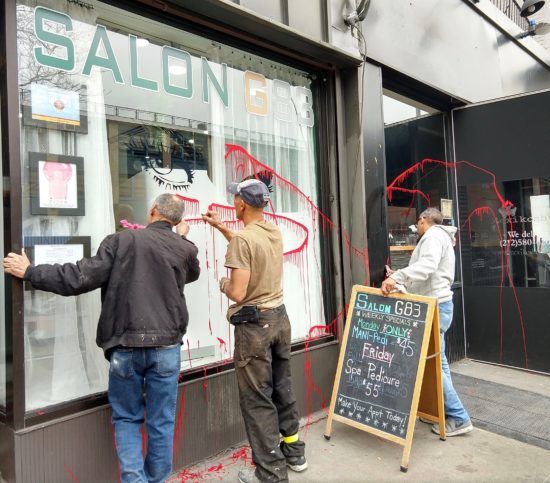
None of these fixes for the subway will matter if the MTA continues to operate as a money pit which must include a hard look at bloated salaries and benefits there. Otherwise this is all just another tax increase which will lead to more tax increases.
If congestion pricing passes, will our Mayor stop travelling in a caravan of cars to his gym in Brooklyn? Her should not be entitled to an exemption.
I’ll say this, a lot of the “gridlock” is the result of street redesign by DeBlasio, not cars. Just look at WEA between 106 and 96th on a weekday morning. Used to flow freely, now it’s a congested mess.
Of course the car haters say this is great, everyone should slow down. But then they complain about gridlock. Well, when does slowing to a crawl become gridlock? You tell me.
This is very true that you are saying and again one of the most ridiculous idea that DOT and community board 7 has done. Unbelievable what they did to West End Ave. Also what it has done is backed up the traffic on Columbus Avenue to 72nd Street at the AM hours and MUCH higher as far up as 79 Street.
Exactly. Same with bicycles – taking a lane away from avenues causes traffic jams. Just look at Amsterdam and 72-nd. Again, car haters might call this “calming traffic”, but when they sit in a bus #7 not able to move for 3 or 4 light changes they are not calm anymore. Not great for emergency vehicles either.
Bicycles move more people per lane per hour than cars (which is another way of saying that cars get in the way more), so if you’re stuck on a bus, the best thing to do is to limit the number of cars.
I think we already have congestion pricing – it is called tolls on bridges and tunnels. Add tolls to the East River crossings (they can be reduced for city residents) and that is a great start.
If this goes forward, the devil is in the details. A few key issues:
1. There must be parking permits for UWS residents or the neighborhood will become a nightmare. Make them $100 – if you can afford to keep a car and insure it, this is not a ridiculous burden. And it will force all neighborhood residents who currently register their cars out of state to register in state, which will yield a lot of money. Some carve out will be necessary for neighborhood employees, such as doormen.
– How will they handle people on the UWS who need to pass through the zone to get to the tunnels? If there is nothing done about this, many more people will go to the GWB, which can’t handle the extra traffic. Perhaps make a rule that if you are an NYC resident and you enter the zone then exit it through a tunnel within an hour of entering the zone, you don’t pay the fee?
– Get ready for the cost of living for basic items to go up. I have already seen an increase due to the increased minimum wage, and this will only make it worse as distributors will need to recoup their increased costs.
This is not going to be fun…
There is no question that immediately after the implementation there will be massive traffic effects north of 60th street. First, there is the parking issue. Those affects will more likely be felt in the northern reaches, as presumably someone coming from NJ who wants to avoid the congestion toll will not be taking the Lincoln Tunnel, and therefore arriving from the GWB. Those drivers will unlikely park anywhere close to 60th street, but leave their cars much more north (perhaps Harlem). Second, the traffic itself. Again, the traffic will be felt in the more northern reaches, as anyone coming to the UWS from the south already will already have to pay the congestion toll, so those who want to avoid the congestion toll will not be coming from the south.
There will be enormous ripple effects. Values of apartments in the zone should, in theory, be affected. Unless taxis/Ubers are exempt somehow, passengers will be hit with massive fare increases. Stores in the zone that rely on constant deliveries, may see (a) costs of good increasing if those delivery services are affected and (b) fewer customers, as traveling to the store may trigger congestion costs from the customer who needs to get to the store by vehicle.
And Q – will Mount Sinai St Lukes be south of the border?
I work in the boondocks in canarsie brooklyn, there is no public transportation. So with congestion pricing i now have to move to long island.
I was told if i enter the fdr at 96th st and go straight to brooklyn bridge there will be no fee
None of these ideas are going to work. The city/state is going to have to come up with something more of a reality other than what is being suggested above. This is totally ridiculous. This is just another way that the city/states is stealing from the people using the MTA name to do it. This is their responsibility enough is enough.
From the article: https://www.nytimes.com/2017/12/28/nyregion/new-york-subway-construction-costs.html
The estimated cost of the Long Island Rail Road project, known as “East Side Access,” has ballooned to $12 billion, or nearly $3.5 billion for each new mile of track — seven times the average elsewhere in the world. The recently completed Second Avenue subway on Manhattan’s Upper East Side and the 2015 extension of the No. 7 line to Hudson Yards also cost far above average, at $2.5 billion and $1.5 billion per mile, respectively.
The current structure of NYC capital expenditure is a massive sinkhole of inefficiency and corruption.
Where did all that money go?? What a rhetorical question!! Between the politicians, unions and fat cat companies/Wall Streeters… there is no mystery here.
Congestion pricing…HA!!!!! just another way to relieve hardworking New Yorkers of a few hard earned bucks. Where is the accountability for the billions already spent (stolen)?? How much is enough!!
This blog has been the leading the charge to find out why our infrastructure costs are so high compared to other countries.
https://pedestrianobservations.com/2019/03/03/why-american-costs-are-so-high-work-in-progress/
The money went to the construction companies who paid hefty kick-backs and the unions. The former can be eventually identified and prosecuted, the latter are untouchable.
This is the clearest article I have read about congestion pricing. I live within the zone and travel frequently outside the zone and to the Bronx. I had hoped there would be concessions/discounts for those of us who start the day inside the zone.
Thank you.
From Brooklyn/Over Bklyn Bridge/head straight to Holland Tunnel thru downtown. There is no way to get to Holland Tunnel (from Bklyn) unless you go through lower manhattan. This needs to be addressed.
I live on west 63rd and worry west 63rd and 62nd will become a taxi stand and Uber drop off
Stop giving them more stupid ideas. The congestion pricing is so ridiculous and it will never work!
If I live on the Upper West Side and I want to LEAVE the city via the Lincoln Tunnel, will I incur the congestion pricing toll?
Similarly if I come back into the city and my destination is upper west, do I incur the toll for driving through the congestion pricing zone?
If so, has anyone discussed what the pollution and gas-wasting fallout will be from the absurd traffic there will be going to and from the GW Bridge?
That’s the point of the plan…to keep cars out of the congested zone. If they carve out exceptions for everyone who thinks they should be exempt because they live in NY, then the plan won’t work. The number of cars operating in the zone needs to be reduced.
So why does NJ and other out of staters get a daily commuter credit coming through the Lincoln or Holland Tunnel? How is congestion reduced by that carve out? I’m not against the plan but it’s full of not well thought out scenarios and no goals for traffic speed. How are we going to know if the plan is successfully reducing traffic and meeting it’s goals? A 10% improvement in speed is not good enough and it’s only been discussed as an outcome but not a goal. A long term speed goal is needed. The State has had five years to figure it out and is still getting it wrong. Finally, lots of traffic diversions need to be addressed by the plan and there is no EAS yet. It will be a mess on Day 1 and for a long time after that. Manhattan residents, especially those on the fringe of the zone are going to feel the worst of it. Get ready for traffic Armageddon.
Under the terms in the Governor’s congestion bill that was submitted with his budget, you would pay the congestion fee when entering the zone and then pay the toll upon returning. There is no explicit scenario outlined in the bill that would credit you the congestion fee charge upon returning through the Lincoln Tunnel. On the other hand, coming through the Lincoln tunnel and then into the congestion zone is explicitly mentioned in the bill. In that case, you get a credit for the toll to apply against the congestion fee. At current toll rates ($12.50 with EZPass in rush hour) and discussed congestion fee ($11.52), the driver would not pay anything. Therefore, a NJ driver will pay no additional fees while you and other westsiders will pay BOTH! Time to call your elected officials and squawk!!
In addition to street parking, which seems to have recently gotten some press and the attention of elected officials, there are three other areas that need to be included in the public discussion and resolved before the bill should be voted on.
1. Add Manhattan Resident Westside and NY/NJ Tunnel Carve Out – Manhattan residents own cars but use them mostly to leave Manhattan. Sometimes in order to leave they will have to enter the proposed Congestion Zone to use facilities that were constructed when the thought of splitting Manhattan into two traffic zones was inconceivable. None of the recent studies produced in the last 5+ years have identified Manhattan resident car owners as the cause of congestion. In fact these studies have identified For Hire Vehicles (FHV), the increase in delivery trucks and the reduction in traffic lanes as the main causes of today’s congestion. So far, FHVs and taxis are required to charge a congestion fee that is passed along to the rider and it is unclear at this time how a pass along FHV/taxi charge will impact congestion.
The Governor’s current bill explicitly provides carve outs for certain drivers entering the Manhattan congestion zone but more carve outs need to be added to it and not left up to the discretion of the TBTA rule making process. For example, in the Governor’s bill, vehicles using an East River Bridge crossing into Manhattan are exempt from the congestion fee if they travel north or south along the FDR drive. Similarly, vehicles entering Manhattan via the Lincoln and Holland Tunnels are able to have their Port Authority toll count as an offset against the congestion fee. Finally, a vehicle travelling the Henry Hudson Bridge, Hugh Carey Tunnel, or Queens-Midtown Tunnel into Manhattan can have their toll offset the congestion fee.
The FDR drive carve out is also available to Manhattan residents north of 60th street but no similar carve out is provided on the west side of Manhattan for vehicles using the Henry Hudson Parkway/Miller Highway/West Street to travel north/south through and out of Manhattan. Also, as presently written, the legislation would charge a Manhattan resident car owner a congestion fee when leaving the City through the Lincoln or Holland Tunnel. There is no explicit exemption in the legislation for a fee waiver under these conditions. So, a Manhattan resident car owner could be charged a fee for travelling less than a mile to leave Manhattan and then when returning home, pay a toll to the Port Authority to return. The bill does not provide a carve out/exception for this scenario. The current bill would effectively charge a car driver from New Jersey or Pennsylvania nothing to enter Manhattan while a Manhattan car owner resident trying to leave the City via the Lincoln or Holland Tunnel would have to pay the congestion fee and the Port Authority toll when returning.
The operational solution for this is easy to implement with cameras and E-ZPass readers hung on gantries at the Manhattan entrance to the Holland and Lincoln Tunnel portals and using the back office software system to match this transaction with the vehicle transaction when it earlier entered the congestion zone for the first time and creating an offsetting crediting transaction. If need be, a Manhattan resident program can be established that is similar to the Staten Island or Rockaway resident programs. If a resident program is not desirable then as an alternative, the previously mentioned back office software change can compare the time stamp when the zone was entered and when left through the tunnel to calculate the time in the congestion zone so that it can be compared to an established rule of permitted time when a vehicle entered the zone and exited through the tunnel. If the rule is met, then no congestion fee is charged.
In summary, the current bill needs to be modified to incorporate two additional carve outs: (1) a no fee Westside north/south pass through and (2) a congestion fee exemption for Manhattan resident drivers using the Lincoln or Holland Tunnels when exiting the borough or a no charge fee for vehicles entering the congestion zone and leaving through the Holland or Lincoln Tunnel within an approved period of time.
2. Traffic Diversions Caused by the Congestion Zone – The information that’s provided on the web does not go into detail about how the fee will affect driver behavior and create diversions and hot spots. If there have been traffic studies, then release them with their summaries and if not, then the legislation should not go any further until they are completed and presented to the public. For example, the 79th Street exit ramp on the Henry Hudson Parkway already backs up on the highway throughout the day and it will only have more traffic getting off when a congestion fee is imposed, since anyone looking to park their car north of the congestion zone would have to exit here. How will an increase in traffic effect the air we breathe and streets we walk from 79th to 61st streets? Likewise, 63rd street on the FDR drive will be an entry point for Manhattan residents looking to go over a free East River Bridge crossing in order to avoid the congestion fee. Then there is the diversion to the George Washington Bridge that would be created if Manhattan residents are not exempted from the congestion fee when entering the Lincoln or Holland Tunnel. If the bill is not modified as I discussed earlier, then many Manhattan residents will be incentivized to go to the George Washington Bridge, a longer trip, causing more pollution in Harlem and Washington Heights and northbound traffic on the Henry Hudson Parkway and Riverside Drive, in order to avoid the congestion fee at the Lincoln or Holland Tunnel. In this last scenario, as written in the current bill, upon returning to Manhattan the driver could return via the George Washington Bridge and not pay a fee or through the Lincoln or Holland Tunnel and have their Port Authority toll offset the congestion fee.
In summary, traffic studies, if not already completed, need to be undertaken and their results presented to the public for review and comment before the bill is brought to a vote.
3. Congestion Pricing Goals – Since TBTA will be evaluating the program, the public should know what the immediate and long-term goals for traffic speeds and other performance measurements are and what modifications to street design and operations will it take to attain them. For example, based on various reports, current traffic speeds in the zone range from 5 to 7 mph. Improvements of about 10% can be expected with a congestion fee of $11.52. The expected improvement, less than 1 mph, is not going be appreciably felt by bus riders or other vehicles in the zone. So, what remedies still need to be taken in order to bring traffic speed to an acceptable level? What is that acceptable level? If you are going to solely rely on a congestion fee to significantly increase traffic speed then you would have to raise the fee considerably over the presently discussed fee of $11.52 and possibly eliminate all carve outs previously mentioned. The public has a right to know what the goals (both immediate and long-term) are and what measures need to be taken for them to be attained, before the bill is voted on.
1. It is absurd to compare Stockholm – a smaller city which has few high rise buildings – to NYC.
London is more complicated and not directly comparable either. And BTW, traffic increased in the perimeter areas of London.
2. Major causes of traffic congestion are overdevelopment, construction, Uber, tsunami of Amazon/ecommerce delivery – and bike lanes which shrunk street space. Of course, in a city run by big real estate, no one would ever suggest curtailment of development. Or a tax on Amazon etc.
3. Among the many significant consequences of congestion pricing – permanent gridlock on the West Side Highway and FDR Drive. This will spillover to the GW Bridge, Cross Bronx etc.
4. Will further hasten Manhattan’s transformation into a gated community for the wealthy.
5. While the MTA is in direcneed of funds, somehow there seem to be millions available to spend on developing/expanding luxury parks in Manhattan…
And billions already wasted on the vanity Calatrava Oculus, money that should have gone to mass transit.
Overdevelopment, this is the major reason. But a lot of people will call it “providing more housing”.
Money grab. More regulation. Stop. Leave me alone.
How does the MTA lose money?
Creating a financial barrier to use city streets only affects those for whom the new fee is a financial barrier. The Donald Trumps of the world won’t be affected one bit.
“The available curb space does not come close to accommodating all of the vehicles that residents of these districts own.”
Why should it? If you want a motor-car, buy a garage space instead of clogging up the curb with it! We have no obligation to provide you with free storage!
We should have done congestion pricing back in 2009. The MTA would have had billions more by now.
But let’s not let up on getting the MTA, and all agencies doing construction or rehab, on reducing costs. Raising money and reducing costs aren’t mutually exclusive.
Fyi- Helen Rosenthal did not stay for the meeting and left right after she made the meeting introduction. Nice to know she sponsored a meeting she didn’t think was important enough to stay and hear what her constituents had to say.
First, the zone should be up to 126th Street. 125th is totally congested. So is 96th. 60th Street makes no sense and all the major downtown arteries are backed up into the 60s or 70s already.
Second, the only exceptions should be residents in the zone. Period. We already love here. People coming from elsewhere should pay. Don’t give credit for tolls unless you double them; otherwise, you’re just encouraging them.
Going back to 17th or 16th century England there was never a right to park on the Kings Highway. Why UWSers think they have a “right” to park free on city streets is beyond me. Time to explain to them they do not, and repeal free parking.
Why do the politicians and bureaucrats make things so complicated? In my book it is simple:
1)Reduce the number of vehicles coming onto the island each day: Add a surcharge to every bridge/tunnel entry point onto the island on top of any toll today, say $5 per vehicle and $10 for trucks. For entry points without tolls today add a toll (the boothless type). Perhaps a sliding down pricing scale for those in certain professions/circumstances needing multiple entries per day if they use an ezpass and go through a certain certification of their circumstance each year (not sure sliding price scale is needed, but an option)
2) To reduce folks leaving cars on the island (including residents): Implement a resident parking permit system across the entire island and restrict parking to resident parking permits only in parking congested areas. Make the parking permits only available to residents (will need to be strictly policed/managed) and make the cost of these permits determinant on where the resident lives, eg. North of 150th street = free, 149th to 96th st = $50, 96th to 60th $100, below 60th $250. This will encourage residents in more congested areas to think twice about having a vehicle and those in less congested areas will not be penalized. At same time increase number of parking meters for those non residents driving and parking on our streets
A solution like this also reduces the need for a bunch of silly workarounds and expensive and ugly tolling equipment to be installed and maintained on our residential streets.
congestion pricing affects the working class and middle class. Why are we talking about this when a surtax on the super wealthy is a simpler and far easier solution?
I agree J c. Say I’m a multi-millionaire with a seven-figure income. I’d love congestion pricing and resident parking fees, and the higher the fee the better.
Let’s say $5k per year for the parking permit and $200 for entering and leaving the congestion zone. Great! That will keep others off the roads. Much less pesky traffic in my way en route to work or play.
And thanks for not taxing me more to help pay for MTA shortfalls.
See https://www.nytimes.com/2019/03/29/nyregion/pied-a-terre-tax.html, which gets down to details, about taxing high-end real estate sales for MTA. Increasingly these properties are in UWS.
All of this information is great and all of the conversation is also important. No one has mentioned people that come to New York for first class medical treatment at specialized hospitals.
Other options:
Should deliveries by 18 wheel trucks be limited to overnight hours?
Should double and triple parking be more than a slap on the hand ticket? UPS, FEDEX and other companies simply budget the tickets (discounted) they receive. They continue to double park as they like.
Try to go down Columbus Ave. Between the bike lane and double parked trucks an both sides of the street there is frequently a funnel of one lane.
Should we put a moratorium on bike lanes? The offset of usage is not compelling.
Other observations:
All this does is put pressure on roads that are already narrowed and crumbling. Where is the government “infrastructure” project that we were promised?
It should start with a better accounting of what the MTA does with the millions of dollars they already receive. Until we can be convinced that they are fiscally responsible HAH! we should not give them more $$$.
The city destroyed the taxi business by allowing virtually unlimited number of ride share vehicles. The taxis used to pay MTA tax. Ride share vehicles do not. The taxis were regulated to ensure that they are accessible for the disabled. The ride share vehicles are not. Moreover, this destroyed any trust in the city that threw taxi drivers and medallion owners under the ride share vehicles for political gain. Now we are stuck. No revenue or disable accessibility. And no ability to reverse it as no sane person would by a medallion or invest in anything regulated by the city given that the city can simply turn around and destroy the business or allow it to be destroyed. The city has effectively lost control over its public transportation. And that’s not even mentioning all the mismanagement that was mentioned in other comments.
Most of the people who drive into Manhattan on a daily basis are of moderate to high income so this surcharge will not affect their driving habits. Paying about $12 is not going to break their bank enough to offset the cost and hassle of either taking public transportation or driving to a point north of 60th st and then taking public transportation. But it will affect many in lower income brackets who might opt not to drive.
I hear a lot of complaints about people wanting neighborhood parking permits which are certain to be abused by workers who will get them somehow. I don’t understand how people don’t mind that building and retail employees currently employ a fine-tuned system of passing off parking spaces among themselves and deprive locals of parking spaces. They look the other way because it’s their doorman, porter, etc who should have to get to work like everyone else.
I live in the congestion zone and work outside Manhattan everyday. This would be an additional unfair tax that I would be forced to pay when I come home in the early evening. I have no choice as there is no public transportation to many of the locations I travel to for work.
I’d venture that more people see cars themselves as a burden on city dwellers and as a punishment for those living here.
What is going to happen when the West Side Highway 79th Street/Boat Basin exit is closed for upwards of 3 years for repairs? No one is going continue south and enter the congestion zone just to exit the highway and turn north again. So more cars getting off at 96th (and 125th too.) Has this ever been brought up at any meeting?